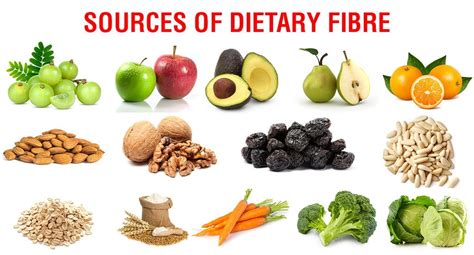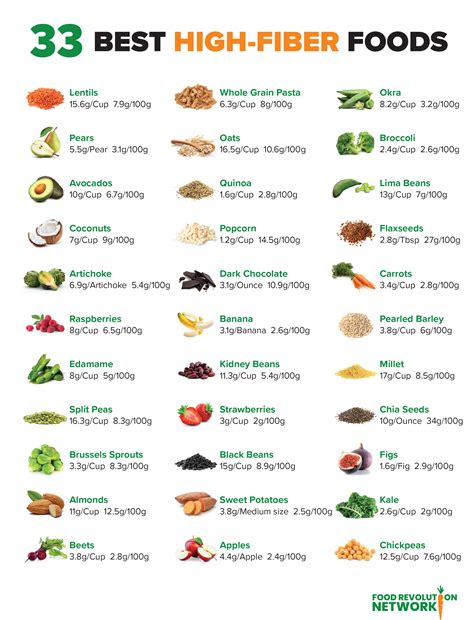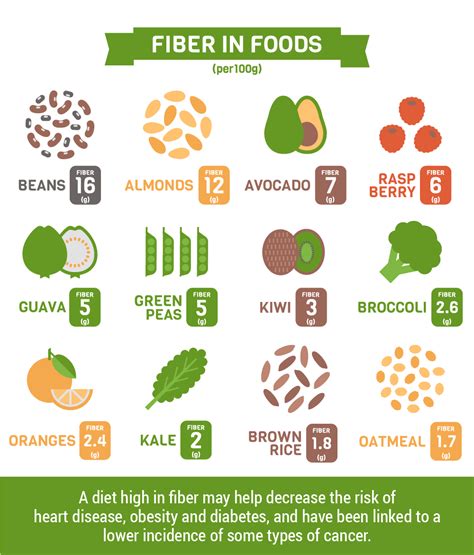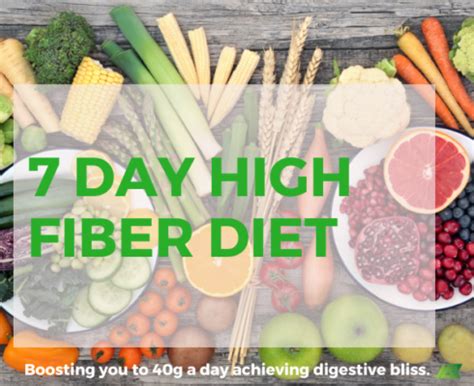Intro
Boost digestive health with 7 high fiber sources, including fruits, vegetables, legumes, and whole grains, rich in soluble and insoluble fiber, supporting healthy gut bacteria and promoting regular bowel movements.
The importance of dietary fiber cannot be overstated. A high-fiber diet has been shown to have numerous health benefits, including promoting digestive health, supporting healthy blood sugar levels, and even aiding in weight management. Despite these benefits, many individuals fail to consume the recommended daily amount of fiber, leading to a range of negative health consequences. In this article, we will delve into the world of high fiber sources, exploring the best foods to include in your diet to boost your fiber intake.
A diet rich in fiber can have a significant impact on overall health and wellbeing. Fiber helps to regulate bowel movements, preventing constipation and reducing the risk of diverticulitis and hemorrhoids. It also plays a crucial role in supporting healthy blood sugar levels, as it slows the absorption of sugar into the bloodstream. Furthermore, a high-fiber diet has been shown to aid in weight loss, as fiber-rich foods tend to be more filling and satisfying, reducing the likelihood of overeating. With so many benefits, it's clear that incorporating high fiber sources into your diet is essential for maintaining optimal health.
Incorporating high fiber sources into your diet can seem daunting, but it's actually quite simple. By making a few simple changes to your daily eating habits, you can significantly boost your fiber intake. From fruits and vegetables to whole grains and legumes, there are countless high fiber sources to choose from. In this article, we will explore the top 7 high fiber sources, providing you with the knowledge and inspiration you need to start making positive changes to your diet.
Introduction to High Fiber Sources

Benefits of High Fiber Sources
The benefits of high fiber sources are numerous and well-documented. Some of the key advantages of incorporating high fiber sources into your diet include: * Promoting digestive health and regulating bowel movements * Supporting healthy blood sugar levels * Aiding in weight loss and management * Reducing the risk of chronic diseases, such as heart disease and diabetes * Supporting healthy cholesterol levelsTop 7 High Fiber Sources

Increasing Fiber Intake
Increasing your fiber intake can be simple and delicious. Here are some tips for incorporating more high fiber sources into your diet: * Start your day with a high-fiber breakfast, such as oatmeal with fruit and nuts * Snack on fruits and vegetables throughout the day * Incorporate legumes into your meals, such as lentil soup or chickpea salad * Choose whole grains over refined grains, such as brown rice instead of white rice * Add nuts and seeds to your meals, such as chia seeds in your smoothie or almonds in your saladHigh Fiber Foods for Digestive Health

High Fiber Foods for Weight Loss
High fiber foods can also aid in weight loss. Fiber-rich foods tend to be more filling and satisfying, reducing the likelihood of overeating. Some of the best high fiber foods for weight loss include: * Avocados: Avocados are rich in fiber and healthy fats, making them a nutritious and filling addition to meals * Berries: Berries, such as raspberries and strawberries, are low in calories and high in fiber, making them a nutritious snack * Leafy greens: Leafy greens, such as spinach and kale, are low in calories and high in fiber, making them a healthy addition to meals * Legumes: Legumes, such as lentils and chickpeas, are high in fiber and protein, making them a nutritious and filling addition to mealsHigh Fiber Diet Plan

High Fiber Recipes
Here are some delicious high fiber recipes to try: * Lentil soup: A hearty and nutritious soup made with lentils, vegetables, and whole grains * Chickpea salad: A healthy and filling salad made with chickpeas, vegetables, and whole grains * Avocado toast: A nutritious and delicious breakfast made with avocado, whole grain bread, and eggs * Berry smoothie: A healthy and refreshing smoothie made with berries, yogurt, and chia seedsConclusion and Final Thoughts

We invite you to share your thoughts and experiences with high fiber sources in the comments below. Have you noticed any benefits from incorporating more fiber into your diet? Do you have any favorite high fiber recipes or tips for boosting fiber intake? Share your stories and help others learn from your experiences.
What are the benefits of a high-fiber diet?
+A high-fiber diet has numerous benefits, including promoting digestive health, supporting healthy blood sugar levels, and aiding in weight loss.
What are some high fiber sources?
+Some high fiber sources include avocados, berries, leafy greens, legumes, whole grains, nuts, and seeds.
How can I increase my fiber intake?
+You can increase your fiber intake by starting your day with a high-fiber breakfast, snacking on fruits and vegetables, incorporating legumes into your meals, and choosing whole grains over refined grains.
